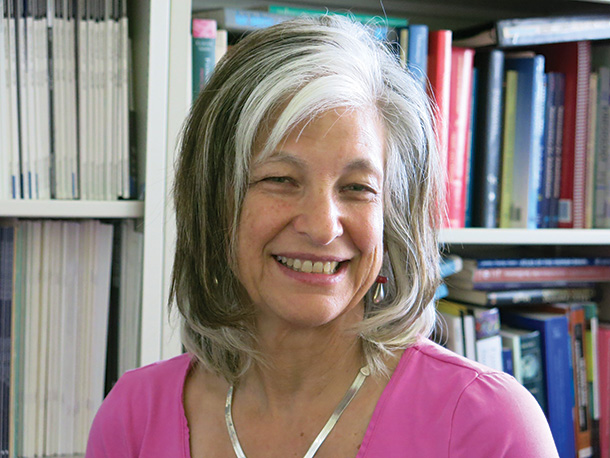By the time you finish reading this article — about four minutes — someone in America will have had a stroke.
In fact, nearly 800,000 people have strokes in the United States every year. It’s the fifth leading cause of death and one of the leading causes of disability, according to the Centers for Disease Control.
Recovering the ability to move arms and hands often requires hours of physical therapy. What’s more, clinicians lack science-based evidence as to which type and amount of therapy is most effective.
But a new study led by Carolee Winstein, PhD, and published in the Feb. 9 issue of the Journal of the American Medical Association has changed that, providing some much-needed scientific data for clinicians. In short, more therapy doesn’t necessarily provide better outcomes.
In the study, called the Interdisciplinary Comprehensive Arm Rehabilitation Evaluation (ICARE), researchers compared two different rehabilitation strategies to determine each one’s effectiveness.
The first group of stroke survivors underwent three one-hour sessions every week for 10 weeks of an intensive, high-repetition, task-oriented physical therapy intervention called the accelerated skill acquisition program (ASAP). The second group underwent an equivalent dose of usual and customary occupational therapy.
After one year, the groups were tested on their arm and hand movements, and researchers discovered there wasn’t that much of a difference between the two interventions.
“We were surprised that ASAP did not, in fact, accelerate motor outcomes,” Winstein said. “We were also surprised that more than doubling the dose of usual occupational therapy did not appear to have an impact either.”
Clinicians can be comfortable knowing that they can choose the best treatment for patients with stroke, Winstein concluded. “For the time being, what is happening right now in usual care — at least in the top-notch places — is the best.”
Unlike previous studies, ICARE is the first clinical trial to look at stroke rehabilitation in the outpatient setting, which is where stroke survivors are currently doing the majority of their rehabilitation.
“With healthcare reform and the shrinking of time for inpatient care, the burden is being placed more and more on the outpatient setting,” Winstein said.
The results could also lead to more efficient stroke rehabilitation, eliminating unnecessary or wasteful medical interventions, one of the goals of 2010’s Affordable Care Act in its quest to keep health care costs down.
Winstein cautioned that the results should not to be generalized to different severity subgroups, psychosocial or physiological outcomes. In this article, researchers were looking only at arm movement recovery.
“Recovery is not just about the individual movement of the arm,” Winstein said. “It’s about integrating the arm movements back into meaningful activities. Survivors want to get back to doing activities that are part of their lives.”
ICARE researchers will delve into social-cognitive and physiological outcomes in forthcoming papers.
ICARE began in 2008 after Winstein was awarded a $12.4 million grant by the National Institute of Health. Co-investigators Alexander Dromerick, of the National Rehabilitation Hospital in Washington, D.C., and Steven Wolf, of the Emory University Center for Rehabilitation in Atlanta, collaborated on the 8-year project.
Winstein has been a professor of the USC Division of Biokinesiology and Physical Therapy since 1990. She runs the Motor Behavior and Neurorehabilitation Lab, which is focused on motor control and learning.
Winstein is one of eight USC Division of Biokinesiology and Physical Therapy faculty members to be named a Catherine Worthingham Fellow of the American Physical Therapy Association.
The Journal of the American Medical Association is an international, peer-reviewed medical journal. It is one of the most widely circulated medical journals in the world, according to the JAMA website. Its 2013 Impact Factor was 35.
— John Hobbs


